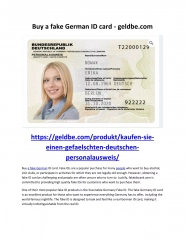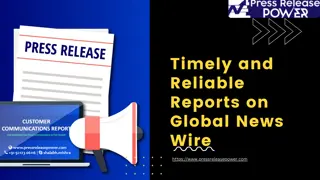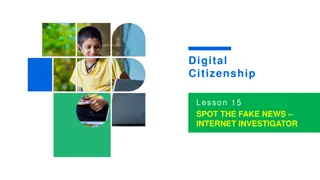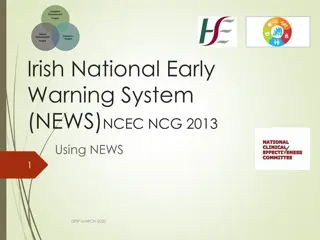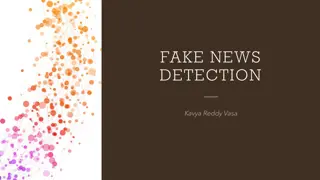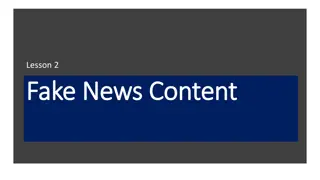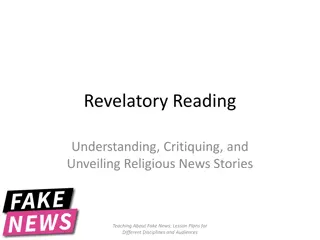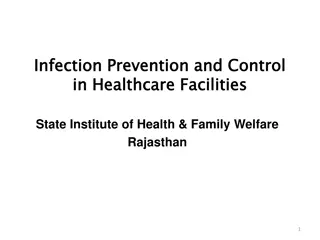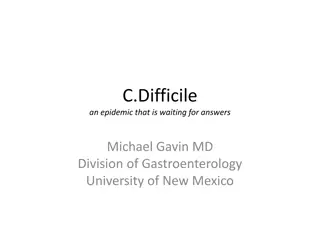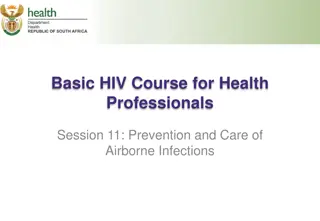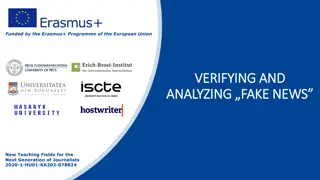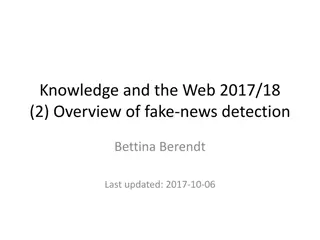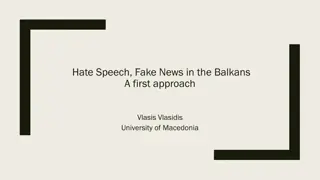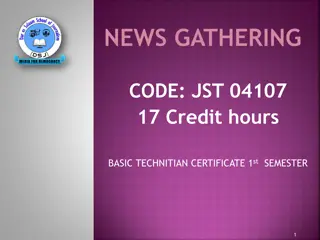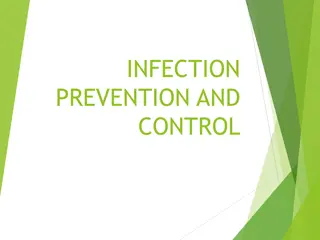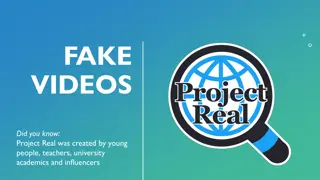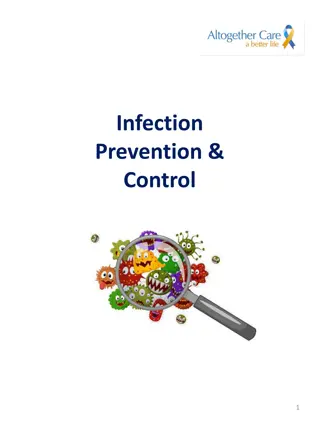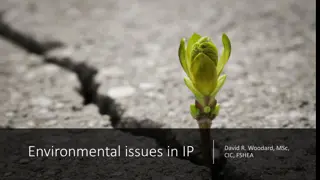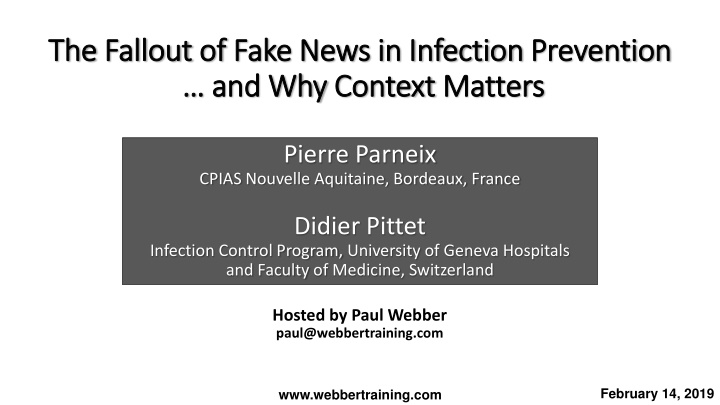
The Fallout of Fake News in Infection Prevention: Why Context Matters
In the age of fake news, misinformation poses a significant threat to infection prevention efforts. This presentation explores the impact of fake news on scientific discourse, highlighting the importance of addressing misinformation within the context of infection prevention. Examples and insights are shared to elucidate the challenges and consequences of misinformation in this critical field.
Download Presentation

Please find below an Image/Link to download the presentation.
The content on the website is provided AS IS for your information and personal use only. It may not be sold, licensed, or shared on other websites without obtaining consent from the author. If you encounter any issues during the download, it is possible that the publisher has removed the file from their server.
You are allowed to download the files provided on this website for personal or commercial use, subject to the condition that they are used lawfully. All files are the property of their respective owners.
The content on the website is provided AS IS for your information and personal use only. It may not be sold, licensed, or shared on other websites without obtaining consent from the author.
E N D
Presentation Transcript
The The Fallout Fallout of of Fake Fake News in Infection News in Infection Prevention and and Why Why Context Context Matters Prevention Matters Pierre Parneix CPIAS Nouvelle Aquitaine, Bordeaux, France Didier Pittet Infection Control Program, University of Geneva Hospitals and Faculty of Medicine, Switzerland Hosted by Paul Webber paul@webbertraining.com February 14, 2019 www.webbertraining.com
Why bother talking about this ? In the scientific community, we have a tendency to ignore misinformation, thinking that it will go away if we do not give it attention But in the age of fake news, this just adds fuel to the fire 2
Fake news and misinformation is a major disruptive force in society Fake News: deliberate misinformation or manipulation of data Bad Buzz: misrepresentation of the nature or conclusions in otherwise sound information or studies Is science protected from fake news? NO!!!! 4
Examples Hospitals disinfecting non-critical areas in the environment O Neill Report projected deaths from antimicrobial resistance Anti-superbug pajamas Copper everywhere 5
How Fake News & Bad Buzz affects IPC within the field of IPC we often work with low category of evidence (case reports and expert opinion) some products and practices originate from the public sphere nexus and sharing of information between IPC and the public 6
Publication and dissemination of research Public IPC 7
Scientists Journal/press release Print/ online Media Social Media Missinformation can take place at various levels: Misleading statements Ecological fallacy Inferences without sufficient evidence A possible way of analyzing if hypotheses are supported is to use the Koch postulates / Bradford Hill criteria (but do not always apply) 8
Scientists Journal/press release Print/ online Media Social Media Information / missinformation spread Abstract misleading compared to paper Sensationalist / Alarmist titles Misleading soundbites from scientist commentary 9
Scientists Journal/press release Print/ online Media Social Media Information / missinformation spread Lay press Specialized medical news sites Often sensationalized 10
Scientists Journal/press release Print/ online Media Social Media Information / missinformation spread In interest groups Trending on Facebook or twitter Often a substrate for misinformation to spread rapidly 11
Why Bad Buzz is a growing concern (1) Why Bad Buzz is a growing concern (1) Pseudo-science and misinformation have always been an issue But rapid proliferation of publication platforms make it easier for poor designed studies to get public attention Normally, in the context of a large number of well-performed studies, one would not expect bad articles to matter or to exert as much influence as they do 12
Why Bad Buzz is a growing concern (2) Why Bad Buzz is a growing concern (2) Types of news outlets and platforms Open access Online media Social media Viral spreading of sensationalism and fear (clickbait) Real-life consequences Misinterpreting the quality of a study or the real-life relevance of its conclusions can lead to wasted resources, bad policy making decisions, and increased morbidity and mortality 13
Case Studies in infection prevention & IPC Measles prevention and ecological fallacy Misleading science and bad press concerning alcohol-based handrubs Bisphenol A Triclosan/triclocarban E. faecium tolerance to alcohol 15
Measles 1998- Wakefield et al. publish in The Lancet about a possible link between measles, mumps, and rubella (MMR) vaccine and autism retracted in 2010 16
Measles 1998- Wakefield et al. publish in The Lancet about a possible link between measles, mumps, and rubella (MMR) vaccine and autism retracted in 2010 Reasons for retraction: - uncontrolled study design - small sample size - speculation in the conclusions - blatant conflicts of interest - allegations of misconduct & ethical violations 17
Measles 1998- Wakefield et al. publish in The Lancet about a possible link between measles, mumps, and rubella (MMR) vaccine and autism retracted in 2010 20 years later cited over 2800 times including 1090 times since 2012 The Wakefield article was published and circulated in the media; people around the developed world began to increasingly fear vaccines 18
Effects: Lack of buy-in Anti vaxx movement Dr. Wakefield is a vocal supporter Social Media (SoMe) as a source of public health misinformation 19
In the UK In the UK MMR vaccine coverage dropped from 91% in 1998 to 80% in 2003 Coverage too low for herd immunity measles cases increased from 56 cases per population of 58.5 million in 1998 to 1370 in a population of 61 million in 2008 Flaherty, D. K. The Vaccine-Autism Connection: A Public Health Crisis Caused by Unethical Medical Practices and Fraudulent Science, OECD Data Available at: http://data.oecd.org/pop/population.htm. 20
and a and around the world round the world Extremely low vaccination rates in certain areas affluent California schools up to 70% of students exempt from vaccination for non-medical reasons Worse vaccination rate than South Sudan 2014: measles in the US spiked with 23 outbreaks and 667 cases 2016: 25% of French parents surveyed had an unfavorable perception of the measles vaccine risk benefit balance 2017: a study showed that healthcare professionals in Italy had even become the vector of transmission in the recent measles resurgence 21
Measles 1998 : Wakefield et al. publish in The Lancet about a possible link between measles, mumps, and rubella (MMR) vaccine and autism Retracted in 2010 2018 : It would be interesting to see a study assessing the negative economic impact of the Wakefield paper Ultimately, it did not matter that the paper was retracted, its shortcomings analyzed in the literature, its experiments replicated with different results, and its authors discredited: the damage was done 22
Misleading science and bad press concerning alcohol-based handrubs 23
Case Studies in infection prevention & IPC Measles prevention and ecological fallacy Misleading science and bad press concerning alcohol-based handrubs Bisphenol A Triclosan/triclocarban E. faecium tolerance to alcohol 24
1. 1. Handrub Handrub and of a misleading study and Bisphenol Bisphenol A: A: a prime example HCW applies a large amount of ABHR containing skin penetration enhancers (such as propylene glycol) HCW touches paper containing BPA for an artificially prolonged time (4 min) HCW then eats ten French fries after holding each fry for 10 seconds Absorbtion of BPA in blood is measured 25
Effect of the study Drastic reduction in ABHR use by HCW (30% in France) Luckily did not spread internationally Possible impact on transmission of healthcare-associated infections 26
2. Triclosan & Triclocarban 2. Triclosan & Triclocarban Media falsely linking triclosan and triclocarban to all ABHRs Some recommending to stop using ABHR The very large majority of ABHRs does not contain these chemicals Florence Statement might have raised awareness and concern Subsequently misplaced in ABHR To note : Although triclosan was banned from soaps in the USA, it is still present in some toothpaste. No articles published on this topic using this information to advocate stopping the use of toothpaste in general. 27
3. Increasing tolerance of VRE to alcohol 3. Increasing tolerance of VRE to alcohol 2018 Australian study Pidot et al. in Science and Translational Medicine Authors compared older and newer Enterococcus faecium isolates from 1997-2015, and the tolerance of these strains to 23% alcohol When using a 70% solution, no difference between resistant and sensitive isolates was observed (ABHRs contain 60-90% alcohol) Tolerant E. faecium were killed by 70% alcohol Wiped mouse cage with a 70% isopropanol wipe CCL: Because ABHRs have been used increasingly over time and while proportion of E. faecium tolerance to 23% alcohol increased from 1997- 2015, ABHRs were pointed as causal factor 28
In Summary: Research is important and well-conducted BUT BUT Title of paper referring to handwash alcohols Press release: alcohol loses its luster Conflating of hypotheses concerning the role of exposure to alcohol in the environment vs. handrubbing 29
Effects Major negative media coverage- Guardian, Times, etc. Global concern in hospitals even in remote areas of the world Possible loss of faith in over 25 years of research Lower compliance? 30
Open platforms and non Open platforms and non- -peer reviewed literature peer reviewed literature Scientific articles and science are presented to the outside world Many of the increasing number of open-access platforms allow for the publication of academic articles without any peer review Part of a normal process of democratization of information in the internet age 32
The Traditional Model of Publishing Good scientific medical journals traditionally don t pay for their articles Journals charge a high subscription fee to their subscribers Experts review submitted manuscripts for free Researchers exchange their work for prestige 34
Issues concerning traditional journals Access to information is difficult and expensive Especially in the developing world For anyone without institutional affiliation World Bank has also been working on this: https://www.theguardian.com/global-development/2012/sep/03/developing-world-open-access-research-hurdles Scientists review for free, and paying for their time falls on other institutions Leads to conflicts of interest in journals themselves 35
Scientific Publishing is Big Business Recently, three publishers account for more than 47% of all papers published 2010: Elsevier s scientific publishing arm made a profit of 724 million on 2bn worth of revenue, with higher margins than Google or Apple 19bn in yearly revenue Reed-Elsevier 24.1%, Springer 11.9%, and Wiley-Blackwell 11.3% (2013) For comparison, the whole US music industry in 2016 was calculated at $17.2bn ( 12bn) 36
Open access Journals The number of open access journals is increasing daily Directory of Open Access Journals: over 1,440 open access medical journals 89 added to the database in the last three months (June 2018) Authors generally pay for their articles publication 37
Open access - A fast growing market From 53 000 articles published in 2010 to 420 000 in 2014 with articles from Asia and Africa accounting for a disproportionate percentage published Market of predatory publishers at around $74 million per year Although this problem is far from being dealt with, there are websites dedicated to identifying the growing list of over 1175 predatory journals 38
Issues concerning open access journals Still expensive for some Motivation of journals to publish as many authors as possible Rise of predatory journals (over 1100 counted) Issues with lack of peer review and bad quality 39
What to do? Need to discuss new models and ideas Some journals (such as Lancet ID) make some important content open access Hard to distinguish facts form fiction The burden of discernment is left to the reader Elsevier has a list of professional level journals OMICS International (but fraudulent organization !) 40
European Initiative for Publishing Plan S Jointly developed by Science Europe and the European Political Strategy Centre at the European Commission Aim: that from 1 January 2020, all scholarly publications resulting from public research funding must be published in Open Access journals or on Open Access platforms https://www.scienceeurope.org/making-open-access-a-reality-by-2020/?fbclid=IwAR38Z-i8EEF- E94njW0UgiCA0TIp05nOIlwPXpRGwaiPFADLP6O4_GTEF8k 41
Open access can be vital Open access can be vital The example of Iran The example of Iran Access to published material is complex limited access to academic journals slow internet connections/barriers to access results in complications to conduct research International sanctions no access to international payment networks prevents scientists from being able to pay for publications online difficult to enroll in international conferences Thus: open access is vital Peters, et al. Fighting the Good Fight: the fallout of fake news in infection prevention and why context matters. Journal of Hospital Infection, 2018. 42
Public Consultation Public Consultation Two questionnaires (Nov 2017 - Feb 2018) one for the citizens one for legal persons and journalists reflecting their professional experience of fake news and online disinformation The public consultation : 2986 replies 2784 from individuals 202 from legal organisations https://https://ec.europa.eu/digital-single-market/en/news/summary-report-public- consultation-fake-news-and-online-disinformation 44
High Level Expert Group High Level Expert Group Set up by European Commission (Jan 2018) Aim: to advise on policy initiatives to counter fake news and disinformation spread online Deliverable: report A multi-dimensional approach to disinformation Defines misinformation as: all forms of false, inaccurate, or misleading information designed, presented and promoted to intentionally cause public harm or for profit. https://https://ec.europa.eu/digital-single-market/en/news/summary-report-public- consultation-fake-news-and-online-disinformation 45
Eurobarometer Survey Eurobarometer Survey Via telephone interviews (February 2018) included all EU Member States over 26 000 citizens participated The findings show a clear concern for the spread of disinformation online in Europe https://https://ec.europa.eu/digital-single-market/en/news/summary-report-public- consultation-fake-news-and-online-disinformation 46
Multi Multi- -stakeholders Conference stakeholders Conference Purpose: to define the boundaries of the fake news phenomenon, assess the effectiveness of the solutions already put in place by social media platforms and to agree on key principles for further action Initial meeting Nov 2018, other meetings after Published a Code of Practice on Disinformation https://https://ec.europa.eu/digital-single-market/en/news/summary-report-public- consultation-fake-news-and-online-disinformation 47
Action Plan: 4 Pillars Action Plan: 4 Pillars Improving the capabilities of union institutions to detect, analyse and expose disinformation Strengthening coordinated and joint responses to disinformation Mobilising the private sector to tackle disinformation Raising awareness and improving societal resilience 48
Implications for Science How do we proceed? 49
BAD BUZZ: Let BAD BUZZ: Let s develop a protocole s develop a protocole Aims: Understand the inaccuracies Materials to collect and review Review of each unsupported assertion or inaccurate statement in each publication/media (grouped by relative impact/importance) Understand the threats To institutions and good research To Public Health Understand the consequences

